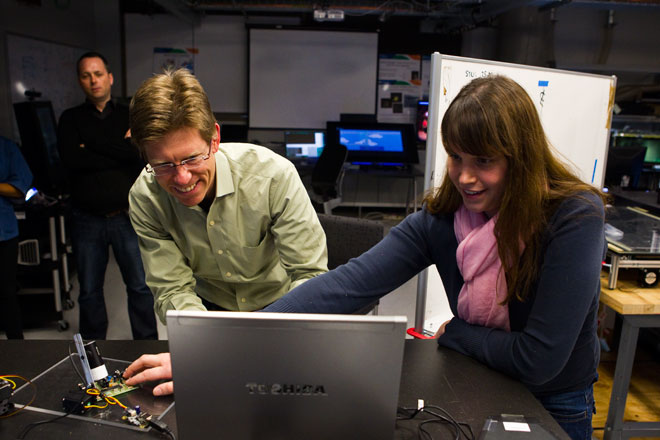
My final story for Wired.com appeared August 31. It’s a look at some of the work that the scientists and engineers in Microsoft’s research division are doing to create the computer interface — and communications screens — of the future.
REDMOND, Washington — Deep inside Microsoft is the brain of a mad scientist.
You might not think so, given the banality of the company’s ubiquitous products: Windows, Office, Hotmail, Exchange Server, Active Directory. The days are long past when this kind of software could light up anyone’s imagination, except maybe an accountant’s.
But Microsoft has an innovative side that’s still capable of producing surprises. In fact, Microsoft spends more than $9 billion a year, and employs tens of thousands of people in research and development alone. While most of that goes toward coding the next versions of the company’s major products, a lot gets funneled into pure research and cutting-edge engineering.
Much of that work happens in Building 99 and Studio B here on Microsoft’s campus.
Building 99 is a think tank in the classic sense: It’s a beautifully-designed building packed to the gills with hundreds of scientists — about half of Microsoft’s researchers work here. In the middle is a tall, airy atrium designed by the architect to facilitate collaboration and the kind of chance meetings that can lead to serendipitous discoveries.
Many of the brainiacs who work in Building 99 are researching areas of computer science that may not have relevance to Microsoft’s bottom line for years, if ever. Heck, they may not have relevance to anything, ever, but the fundamental premise of basic research is that for every dozen, or hundred, or thousand off-the-wall projects, there’s one invention that turns out to be fabulously important and lucrative.
In fact, you only need one hit to make billions of dollars in research pay off, even if you waste the rest of the good ideas. As Malcolm Gladwell argued recently, Xerox, which is often derided for failing to take advantage of a series of amazing inventions at its Palo Alto Research Center, actually saw huge returns from just one invention: the laser printer. Against that, it’s not necessarily a bad thing that Xerox PARC was home to hundreds of useless research projects, or that Xerox never figured out what to do with some of its research, like the graphical user interface.
Continue reading: How Microsoft Researchers Might Invent a Holodeck | Wired.com